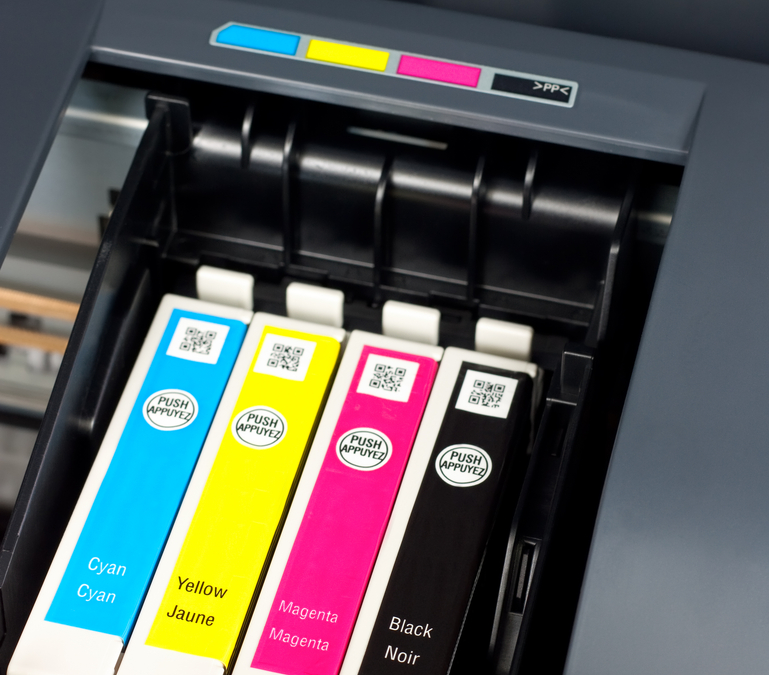Understanding where the photocopier machine (an integral component of your everyday business arsenal) originated from enables you to experience a new appreciation for it and how far it has come over the decades!
Necessity is the mother of invention
 Most great inventions are inspired by a need to accomplish a goal. The photocopier is no different. The copier was originally invented by an arthritic patent attorney and part-time researcher/inventor named Chester Carlton. Back in 1938, Carlton decided he was tired of the pain and tedium involved with making handwritten copies of important documents at the New York Patent Office. He began experimenting in his own kitchen using plates made of zinc and covered with sulfur. He wrote the words “10-22-38 Astoria” on a microscope slide, placed it on top of the sulfur, and shined a bright light over the slide. Afterwards, the words remained on the plate in mirror image.
Most great inventions are inspired by a need to accomplish a goal. The photocopier is no different. The copier was originally invented by an arthritic patent attorney and part-time researcher/inventor named Chester Carlton. Back in 1938, Carlton decided he was tired of the pain and tedium involved with making handwritten copies of important documents at the New York Patent Office. He began experimenting in his own kitchen using plates made of zinc and covered with sulfur. He wrote the words “10-22-38 Astoria” on a microscope slide, placed it on top of the sulfur, and shined a bright light over the slide. Afterwards, the words remained on the plate in mirror image.
Research and Development
As with most inventions, society was not immediately onboard with Carlton’s copying process and companies such as IBM and General Electric rejected proposals to develop the technology. The Battelle Memorial Institute finally agreed to assist Carlton in further research and development. Several years later, The Haloid Company of New York obtained the license to market the technology, marking an important turning point for the development of modern photocopiers. Haloid made the decision to change the name of Carlton’s process from electrophotography to xerography and later changed its own name to Xerox Corporation.
A photocopier (and an industry) is born
From Carlton’s humble beginnings in his kitchen, it took over 20 years to develop the first photocopier machine. In 1958, the Xerox 914 hit the market as the first commercially-available photocopier. The introduction of this device was phenomenally successful and Xerox saw revenues jump by millions of dollars in just a few short years. Throughout the 1960s and 1970s, many other companies observed Xerox’s success and surged to produce their own photocopiers. Brands like Ricoh, Cannon, Minolta, Sharp, and Konica all began to vie for a piece of the market.
Cutting-Edge Technology
Throughout the history of the photocopier, companies have worked to provide the most state-of-the-art technology. During the early days of commercial copy machines, this meant offering the ability to make copies in color. The Color-In-Copier was the first photocopier to offer full-color copies and was released by 3M in 1968. In more recent years, there has been a big shift towards digital copiers that can act as a hub for businesses. Digital collation has been a major improvement over analog copiers because it allows photocopiers to store images and quickly produce multiple copies of multi-page documents. Better image quality, networking capability, and handy finishers have all been added to modern copiers, making them indispensable equipment.
Konica Minolta- A history of innovation
Japanese company Konica Minolta was officially created by a 2003 merger between two separate companies (Konica and Minolta). However, ingenuity and inventiveness started long before the merger. The company began selling photocopying materials in the late 1800s and developed their first camera by 1900. Konica Minolta’s first photocopier hit U.S. markets in 1971. Since then, advancement in photocopier technology has been a mainstay for the company. Modern devices like the Bizhub C364 Color Copier Printer Scanner demonstrate how great photocopiers can improve the operations of any business.
Photocopiers have come a long way over the last couple of decades. From the early days of Chester Carlton’s kitchen experiments to the rise of Xerox, followed by the subsequent explosion of new technology, it’s clear that the modern photocopier has become a vital piece of office equipment. Contact us at Common Sense Business Solutions to explore the various Konica Minolta models available today.
Frequently Asked Questions
1. Who invented the photocopier machine and why?
Chester Carlson, an arthritic patent attorney, invented the photocopier machine in 1938 because he was tired of the time-consuming process of manually duplicating documents. Using plates covered with sulfur, Carlson created the first photocopy with the simple inscription, “10-22-38 Astoria.” His goal was to streamline document reproduction, paving the way for today’s advanced copiers. His invention was the foundation for modern-day Xerox machines, which later revolutionized offices worldwide.
2. How did photocopiers evolve from Chester Carlson’s invention?
Initially, Chester Carlson struggled to find companies willing to back his invention, but the Battelle Memorial Institute supported his research, eventually leading to a partnership with the Haloid Company (later known as Xerox). By 1958, Xerox introduced the first commercial photocopier, the Xerox 914. Its success was enormous, making document copying a ubiquitous office task. Over the decades, features like color copying, digital interfaces, and wireless capabilities transformed copiers into multifunctional devices used in modern offices.
3. Why was xerography important to the development of modern copiers?
Xerography, which means “dry writing,” was essential because it made duplicating documents easier and faster than traditional methods. Chester Carlson’s invention replaced time-consuming manual copying and wet photographic techniques. This technology became the core of Xerox copiers, allowing documents to be reproduced with just the click of a button. Today, xerography remains the basis for most office copiers, highlighting its lasting impact on business efficiency.
4. When was the first color photocopier introduced?
The first color photocopier hit the market in 1968, developed by 3M and known as the Color-In-Copier. This groundbreaking innovation allowed businesses to reproduce vibrant, full-color documents for the first time. It marked a huge leap forward, especially for industries like advertising, marketing, and design, where color was critical to creating visually engaging materials.
5. What is the significance of the Xerox 914 copier?
The Xerox 914, introduced in 1958, was the first commercially successful photocopier and became a symbol of office productivity. Capable of making 100,000 copies per month, it was revolutionary in reducing the time and effort needed to replicate documents. The Xerox 914 earned over $60 million in its first few years, setting the stage for the widespread adoption of photocopiers in offices around the world.
6. How did Konica Minolta shape the photocopier industry?
Konica Minolta, known for its technological innovations, has been a major player in the photocopier industry since the 1970s. The company revolutionized the market by developing high-quality color copiers and multifunctional devices that combine printing, scanning, and faxing. Their Bizhub series remains a popular choice for businesses looking to streamline their office tasks, thanks to features like digital collation and energy-saving technologies.
7. What technological advancements have modern copiers introduced?
Modern copiers offer features like wireless connectivity, digital collation, cloud integration, and touchscreen interfaces. These innovations make copying, scanning, and printing faster and more efficient. Energy-efficient designs, high-speed color printing, and mobile printing capabilities are now standard, allowing businesses to meet their document needs quickly and sustainably.
8. Why did it take so long to develop the first commercial photocopier?
It took over 20 years to perfect the photocopier because early prototypes were unreliable and expensive. Chester Carlson’s original process, though groundbreaking, needed significant research and development. It wasn’t until companies like the Battelle Memorial Institute and the Haloid Company invested in the technology that commercial photocopiers like the Xerox 914 became viable. Technological limitations in the 1930s and ’40s also slowed progress.
9. How have photocopiers impacted businesses over the years?
Photocopiers have drastically increased office efficiency by eliminating the need for manual document duplication. Businesses now save time and resources by easily producing multiple copies of contracts, reports, and marketing materials. The shift to digital copiers further enhanced productivity by enabling document storage, networking, and wireless printing, allowing businesses to manage their operations seamlessly.
10. What were the biggest challenges Chester Carlson faced in developing the photocopier?
Chester Carlson faced numerous challenges, including physical limitations due to arthritis, financial constraints, and widespread skepticism from companies like IBM and General Electric. It wasn’t until the Battelle Memorial Institute saw the potential in Carlson’s invention that his idea gained traction. Even then, perfecting the technology took years, and Carlson had to overcome technical hurdles like achieving consistent image quality and making the machines cost-effective.



